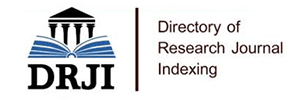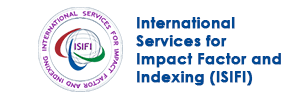
Journal Basic Info
**Impact Factor calculated based on Google Scholar Citations. Please contact us for any more details.Major Scope
- Cervical Cancer
- Neoadjuvant Therapy
- Central Nervous System Tumors
- Blood Cancer
- Stomach Cancer
- Endometrial Cancer
- Paediatric Cancers
- Hematology
Abstract
Citation: Clin Oncol. 2022;7(1):1932.DOI: 10.25107/2474-1663.1932
Cryoablation Using Liquid Nitrogen for Metastatic Lung Cancers
Hiroaki Nomori, Ikuo Yamazaki and Takuya Adachi
Department of General Thoracic Surgery, Kashiwa Kousei General Hospital, Japan
Departments of Radiology, Kameda Medical Center, Japan
Department of Radiology, Tokyo Medical and Dental University, Japan
*Correspondance to: Hiroaki Nomori
PDF Full Text Research Article | Open Access
Abstract:
Background: While the cryoablation for tumors has been conducted using argon gas, the present study conducted cryoablation using liquid nitrogen for metastatic lung cancers. The study aim is to evaluate the suitability of cryoablation using liquid nitrogen for metastatic lung cancer and to compare preserved pulmonary function according to the number of treated tumors.
Methods: This was a retrospective observational study including 68 patients with 121 metastatic lung tumors that were treated with cryoablation using liquid nitrogen between 2013 and 2019. The treatment was performed with a single 10-G cryoprobe under computed tomography with local anesthesia. To penetrate the tumor with cryoprobe under spontaneous breathing, a guide needle kit consisting of a 21-G guide needle and an 8-G stainless-steel coaxial system was used. Cryoablation was generally performed with repeating freeze and thaw for 3 cycles. Primary outcome was the local control and incidence of pneumothorax. Secondary outcome was whether preserved pulmonary function 6 months after cryoablation varied according to number of treated tumors.
Results: Cryoprobe could reach all of the 121 tumors under computed tomography. Median followup period was 32 months. Histological types were carcinomas in 95 tumors and sarcoma in 26. The 3-year local control rate was 73% in all tumors, and 96% and 46% in tumors <2.2 cm and ≥ 2.2 cm, respectively. While the local control was not different in tumors <2.2 cm between carcinoma and sarcoma (p=0.43), sarcoma showed significantly poorer local control than carcinoma in tumors ≥ 2.2 cm, of which 3-year local control rate was 18% and 62%, respectively (p<0.001). The incidence of pneumothorax was 25%. While the average preserved pulmonary function was 98 ± 6% after cryoablation for 1 tumor, the treatment for multiple tumors was associated with significantly lower preservation of pulmonary function (p=0.002).
Conclusion: Cryoablation using liquid nitrogen would be one of the treatment methods for metastatic lung cancers <2.2 cm. Preserved pulmonary function declined significantly with an increasing number of treated tumors.
Keywords:
Cryoablation; Liquid nitrogen; Argon gas; Metastatic lung cancer; Local control; Pneumothorax
Cite the Article:
Nomori H, Yamazaki I, Adachi T. Cryoablation Using Liquid Nitrogen for Metastatic Lung Cancers. Clin Oncol. 2022;7:1932..













